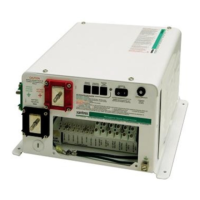
Do you have a question about the Xantrex RV2012GS and is the answer not in the manual?
| Model | RV2012GS |
|---|---|
| Continuous Output Power | 2000 W |
| Surge Rating | 4000 W |
| Input Voltage | 12 VDC |
| Output Voltage | 120 VAC |
| Output Frequency | 60 Hz |
| Waveform | Modified Sinewave |
| Efficiency | 90% |
| Type | Inverter |
Explains the manual's goal of providing explanations and procedures.
Defines the manual's coverage of safety, planning, and troubleshooting.
Identifies the intended readers of the manual, including installers.
Outlines the manual's structure into chapters and appendix.
Explains formatting conventions, warnings, cautions, and symbols used.
Directs users to additional resources on the Xantrex website.
Describes Xantrex Technology Inc. as a supplier of advanced power electronics.
Lists company trademarks and copyright information.
Outlines warranty and liability limitations for manual information.
Provides telephone, fax, email, and website for Xantrex customer service.
Lists general safety guidelines before installing or using the inverter/charger.
Warns about potential equipment damage from improper installation or AC wiring.
Details hazards and precautions related to explosive gases from batteries.
Advises on safety measures and precautions when working with batteries.
Provides guidance on using rechargeable appliances with the inverter/charger.
Describes the product's capabilities, power output, and available models.
Explains the automatic transfer switch between inverter and charger modes.
Details the typical transfer time for power source switching.
Identifies and describes the components on the unit's front panel.
Lists optional accessories such as remote controls and sensors.
Describes RC6, RC7, and RC/GS remote controls and their functions.
Explains the BTS function for temperature-compensated charging and mounting.
Outlines criteria for selecting a suitable and safe installation site.
Advises on protecting the unit from battery acid, gases, and proper orientation.
Provides general instructions and warnings for wiring the unit.
Details AC wiring requirements, NEC standards, and terminal connections.
Explains AC input source types (split-phase, dual, single) and wiring needs.
Lists general precautions for AC wiring, including disconnects and bonding.
Details installation procedures for 120/240 Vac systems with a transfer relay.
Lists the necessary tools and materials for making AC wiring connections.
Provides step-by-step instructions for connecting AC wiring to the terminal block.
Explains GFCI requirements and compatibility with the inverter/charger.
Details DC wiring, safety instructions, and battery requirements.
Specifies acceptable battery types (flooded, gel, AGM) and voltage.
Explains the need for DC fusing and over-current protection.
Covers DC disconnect types, rating, location, and grounding system connections.
Provides recommended battery cable sizes based on current and length.
Step-by-step guide for safely connecting DC battery cables to the unit.
Explains the procedure for safely disconnecting battery cables for maintenance.
Details how to connect and mount the Battery Temperature Sensor (BTS).
Describes two options for mounting the BTS on a battery terminal or case.
Provides instructions for wiring the unit to a generator for AGS.
Outlines generator specifications needed for automatic start functionality.
Details the terminal connections for the Auto Gen Start feature.
Illustrates internal relay activity during a generator start sequence.
Specifies wire gauge for generator connections and circuit protection.
Presents wiring diagrams for Onan, Power Tech, and Generac generators.
Explains thermostat connections to enable generator start based on temperature.
Describes operation using RC/GS, RC7, and RC6 remote controls.
Covers unit operation without a remote, including self-diagnostic routine.
Explains the energy-saving search mode and its adjustable sensitivity.
Discusses how the inverter handles different types of electrical loads.
Explains how the inverter drives simple resistive loads like toasters.
Details handling of inductive loads, especially motors and their startup surge.
Describes automatic shutdown to protect batteries from excessive discharge.
Discusses issues with small loads, fluorescent lights, and sensitive electronics.
Provides a table showing typical battery consumption for common appliances.
Details the bulk, absorption, and float stages of the battery charging cycle.
Explains how BTS adjusts charging voltage based on battery temperature.
Describes the unit's ability to recharge batteries with very low voltage.
Explains manual equalization for flooded lead-acid batteries and safety warnings.
Explains the meaning of the unit's LED indicators for charger and inverter activity.
Lists LED flashing patterns for error conditions and their causes.
Provides a guide for diagnosing and resolving common symptoms and problems.
Lists detailed electrical parameters like power, current, voltage, and waveform.
Lists operating and non-operating ambient temperature ranges.
Details unit weight, dimensions, and mounting options.
Lists optional accessories such as BTS, remote controls, and cables.
Lists certifications and approvals obtained by the product.
Details what the limited warranty covers, its duration, and transferability.
Explains the process for troubleshooting and obtaining warranty service from Xantrex.
Lists acceptable forms of dated proof of purchase for warranty claims.
Lists conditions and situations not covered by the limited warranty.
Warns against using the product with life support systems or as a UPS.
Outlines the policy and procedure for obtaining an RMA before returning products.
Provides step-by-step instructions for safely packaging and shipping returns.
Explains service options and fees for units outside the warranty period.
Prompts users to record system details for better customer service.
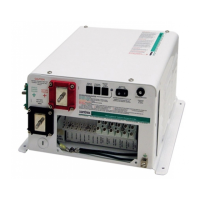
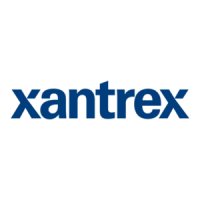
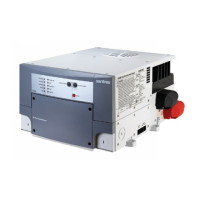
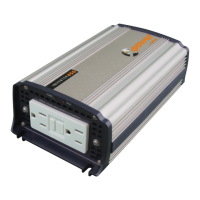
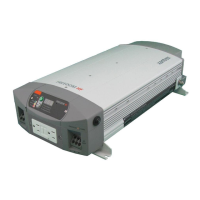
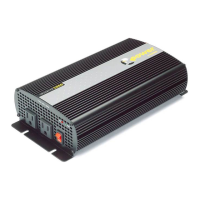
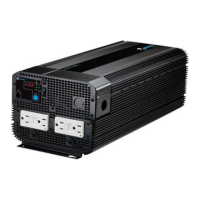
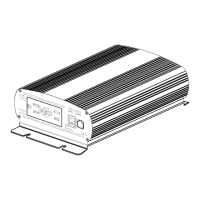
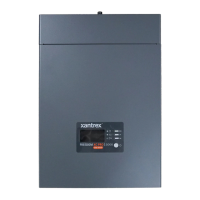

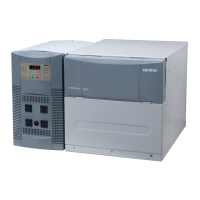
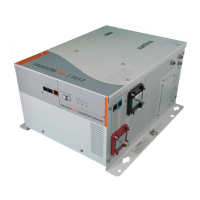
